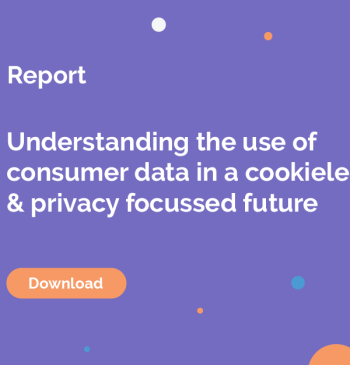Data sets, Targeting & Programmatic Marketing
Our IDFA Problem: It’s Time To Talk About Individuals, Not Devices
- By smrtr insights
- No Comments
03 Feb

While 2020 has seen much discussion around the demise of third party cookies and the evolution of targeting, there is another big issue in the identification space.
Apple – the company behind the iPhone – has announced its plans to phase out its Identifier for Advertisers (IDFA) as a way to give users greater control in how their data is shared.
“We believe tracking should always be transparent and under your control,” Apple said about the move.
There are similarities between Apple’s decision to pull the pin on the IDFA and Google’s move to deprecate third party cookies. A tech giant with market dominance moving to change an industry standard tracking feature.
There are also similarities in the timeframe marketers have been given to prepare for the upcoming changes. Google has set 2022 as the date for the third party cookies phase out, while Apple has said it will start to enforce its changes from early next year.
But the task of preparing for life after the IDFA is arguably far more challenging than the ‘cookiepocolypse’. Mobile browsing is currently one of the fastest-growing channels in online advertising. Mobile traffic grew 14 per cent between Q4 2019 and Q1 2020, according to the Ericsson Mobility Report.
This rapid rise means that marketers are on the lookout for solutions that can help them leverage the rafts of data that are coming through via mobile right now. But with uncertainty around the future of the IDFA – and the potential replacements – the industry is now facing a sense of confusion.
What’s going to change?
Until now, all iPhone users have been automatically opted-in to IDFA, giving advertisers ample opportunity to collect data and information on how each iPhone owner uses their device. From this year, iOS 14 users will automatically be opted out of IDFA and the responsibility will fall on the end user to opt in for tracking.
To replace IDFA, Apple has promoted its little-known SKAdNetwork as a way to receive metadata from ad clicks and send information from apps back to advertisers. However, advertisers have been concerned about a number of features in the SKAdNetwork, including “arbitrary restrictions on number of campaigns, strange approach to conversion values and time restrictions preventing anything close to real-time data”.
Hashed email addresses – which convert email addresses into a 32-character string using a hashing algorithm – could also see increased popularity as a result of the demise of the IDFA. These addresses essentially serve as an anonymised identifier of a user, meaning advertisers can track behaviour without encroaching on privacy. However, this technology has obvious limitations, namely they require users to authenticate themselves by logging in, which is not always common.
Identity is about people
Like cookies, the IDFA tracks how individuals use an internet-connected device – not the individual themselves. And while this approach has proven successful in its own way, there is now doubting there is a need for change.
The demise of the IDFA, alongside the deprecation of cookies, should show the industry that identity in the future will be about people.
And it’s a future that we’re prepared for here at smrtr with our behavioural data being largely “offline” including genuine transactions rather than online browsing. Similarly, we have introduced measures that help us make a connection between a person visiting a website when they are logged in using email as a key, while when they are not logged in, we can identify characteristics based on location data.
Our data universe provides you with the demographic, socio-economic, transaction and location information on over 16 million individuals (not devices). With this data, you can start finding the right customers for your business and achieve the results you want.
To find out more contact us and we’ll be in touch by the next working day.
By Steve Millward, General Manager – Commercial at smrtr



